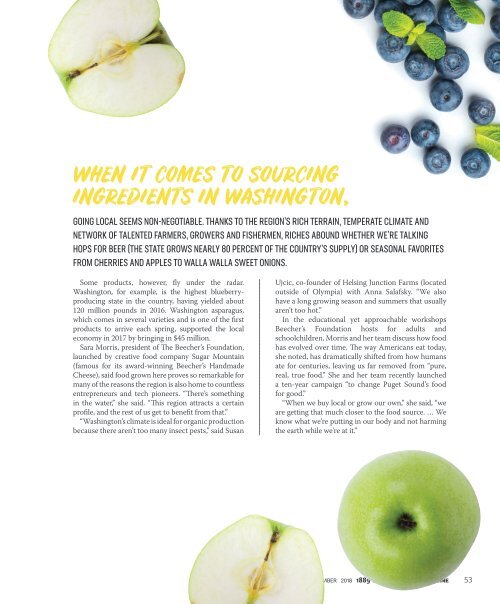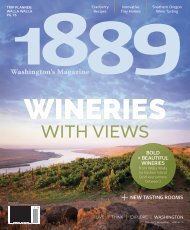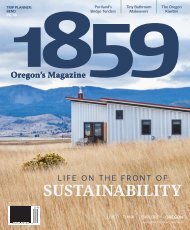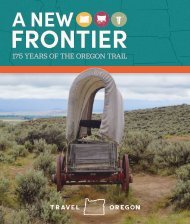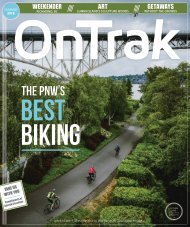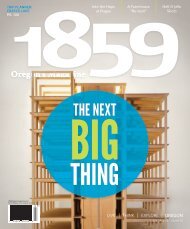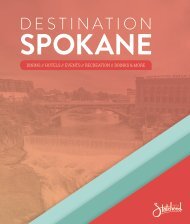1889 August | September 2018
Create successful ePaper yourself
Turn your PDF publications into a flip-book with our unique Google optimized e-Paper software.
WHEN IT COMES TO SOURCING<br />
INGREDIENTS IN WASHINGTON,<br />
GOING LOCAL SEEMS NON-NEGOTIABLE. THANKS TO THE REGION’S RICH TERRAIN, TEMPERATE CLIMATE AND<br />
NETWORK OF TALENTED FARMERS, GROWERS AND FISHERMEN, RICHES ABOUND WHETHER WE’RE TALKING<br />
HOPS FOR BEER (THE STATE GROWS NEARLY 80 PERCENT OF THE COUNTRY’S SUPPLY) OR SEASONAL FAVORITES<br />
FROM CHERRIES AND APPLES TO WALLA WALLA SWEET ONIONS.<br />
Some products, however, fly under the radar.<br />
Washington, for example, is the highest blueberryproducing<br />
state in the country, having yielded about<br />
120 million pounds in 2016. Washington asparagus,<br />
which comes in several varieties and is one of the first<br />
products to arrive each spring, supported the local<br />
economy in 2017 by bringing in $45 million.<br />
Sara Morris, president of The Beecher’s Foundation,<br />
launched by creative food company Sugar Mountain<br />
(famous for its award-winning Beecher’s Handmade<br />
Cheese), said food grown here proves so remarkable for<br />
many of the reasons the region is also home to countless<br />
entrepreneurs and tech pioneers. “There’s something<br />
in the water,” she said. “This region attracts a certain<br />
profile, and the rest of us get to benefit from that.”<br />
“Washington’s climate is ideal for organic production<br />
because there aren’t too many insect pests,” said Susan<br />
Ujcic, co-founder of Helsing Junction Farms (located<br />
outside of Olympia) with Anna Salafsky. “We also<br />
have a long growing season and summers that usually<br />
aren’t too hot.”<br />
In the educational yet approachable workshops<br />
Beecher’s Foundation hosts for adults and<br />
schoolchildren, Morris and her team discuss how food<br />
has evolved over time. The way Americans eat today,<br />
she noted, has dramatically shifted from how humans<br />
ate for centuries, leaving us far removed from “pure,<br />
real, true food.” She and her team recently launched<br />
a ten-year campaign “to change Puget Sound’s food<br />
for good.”<br />
“When we buy local or grow our own,” she said, “we<br />
are getting that much closer to the food source. … We<br />
know what we’re putting in our body and not harming<br />
the earth while we’re at it.”<br />
AUGUST | SEPTEMBER <strong>2018</strong> <strong>1889</strong> WASHINGTON’S MAGAZINE 53


